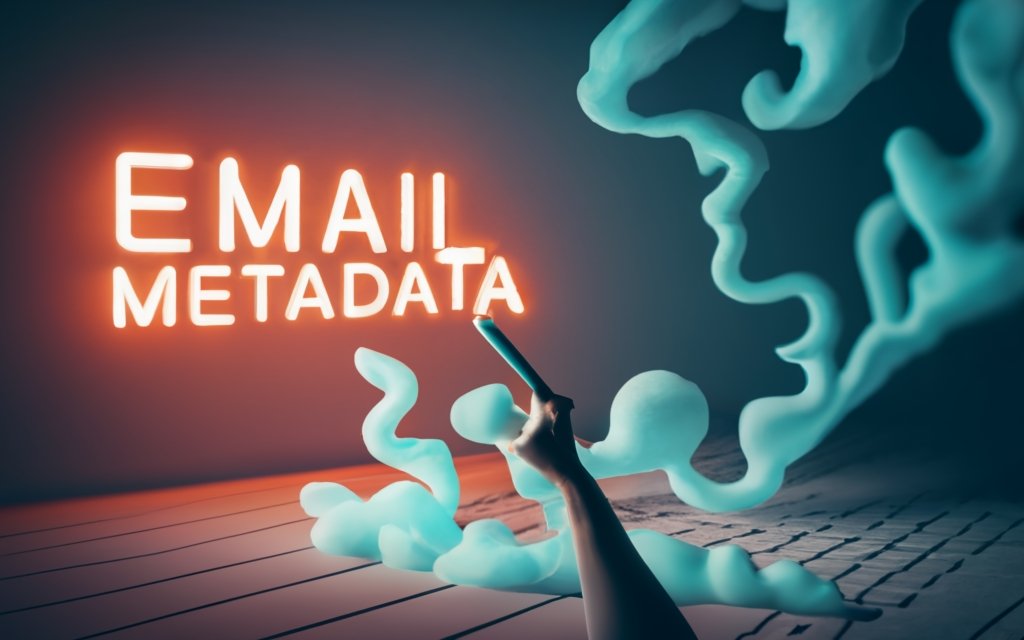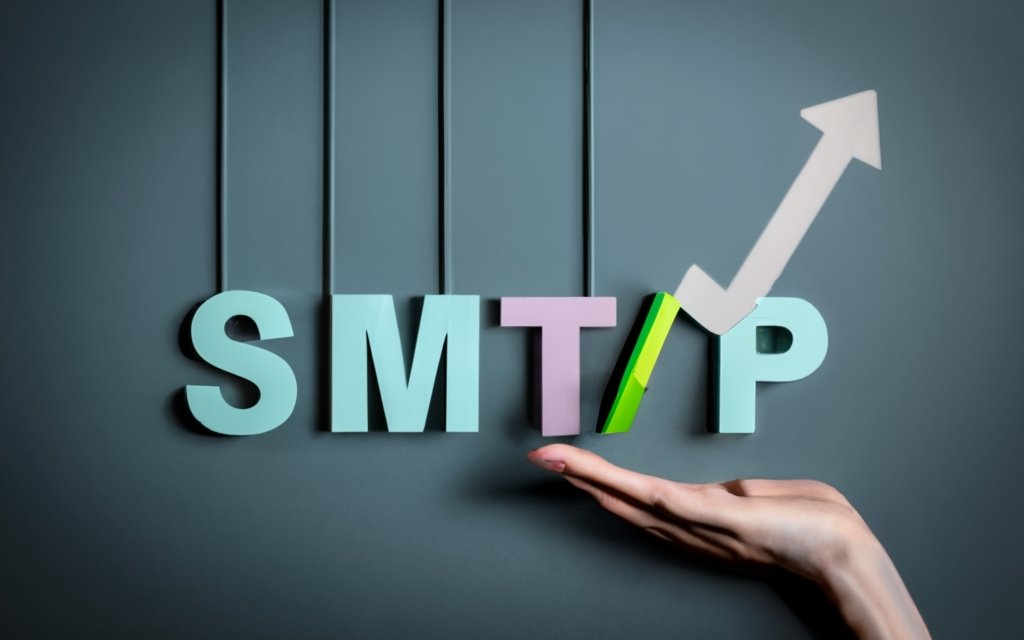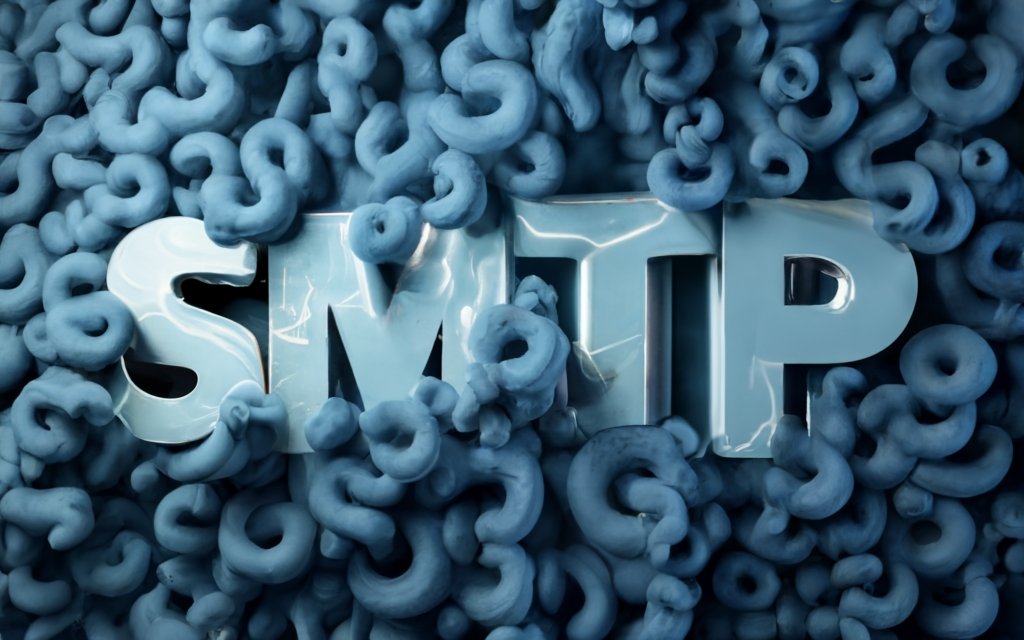When you send an email, it’s like launching a spaceship into the digital ether. Sure, your message text is the astronaut. But just as important are the technical systems guiding your email safely through cyberspace to its destination.
These hidden support systems are email metadata and SMTP headers.
In this comprehensive guide, we’ll explore what headers are, how they work, why they matter, and how to leverage them for security, deliverability, and diagnostics. Buckle up for a thrilling tour into the inner workings of electronic mail!
What is Email Metadata and Why It Matters
When you send or receive an email, there’s a lot more going on under the hood than just your message text zooming from point A to point B. Each email comes packaged with additional data that provides crucial details about its journey and contents. This supplementary information attached to emails is known as metadata or email headers.
At first glance, metadata may seem like technical jargon that’s only relevant to engineers. But understanding email headers allows you to unlock useful capabilities around security, deliverability, and more. Let’s break down exactly what email metadata entails and why it’s so valuable.
Key Fields and Information in Email Headers
Every email header contains a number of standardized fields that serve specific functions:
From: The sender’s email address and optionally their name. Knowing the origin of an email helps validate if it’s legitimate.
To: The primary email recipient(s).
Cc: Any additional recipients being copied.
Date: The date and time the message was sent. This timestamp enables organizing conversations chronologically.
Subject: A summary of the email topic, which allows for quick triaging.
Message-ID: A unique identifier for each email generated by the sender’s device or email server. Prevents duplicate sends and facilitates threading related messages.
Received: Includes technical routing data about each server/network the email traversed through. There can be multiple “Received” lines as the message hops from point to point.
Return-Path: The envelope sender address where bounces or errors should go. Often used for loopback deliverability testing.
Beyond this standard metadata, an email header may also contain proprietary fields added by spam filters, analytics services, or the sender themselves. For example, X-Spam-Status ratings or custom tracking codes.
Table: Common Email Header Fields and Usage
| Header | Description | Key Uses |
| – | – | – |
| From | Sender’s email address and name | Authentication |
| To | Primary recipient addresses | Routing |
| Cc | Additional copy recipients | Routing |
| Date | Date and time sent | Organization |
| Subject | Summary of topic | Identification |
| Message-ID | Unique message identifier | Anti-duplication, threading |
| Received | Routing hop data | Diagnostics, authenticity |
| Return-Path | Envelope sender address | Loopback testing |
This metadata is attached to every single email that’s sent, whether it’s a personal message, commercial newsletter, or anything else. It shuttles along with the email content as a package deal.
Importance and Uses of Email Metadata
Given that every email contains header metadata, you may be wondering — why does it matter? Here are some of the key ways email headers are used:
Routing Emails
Mail servers rely on header fields like To, From, Cc, and Received to determine where emails should be directed as they travel through multiple points en route to the final destination inbox. Metadata enables reliable relaying and delivery.
Authentication
Recipients use the From address in an email header to confirm the sender is who they claim to be. Email services also check for header authenticity using protocols like SPF, DKIM, and DMARC to guard against spoofing.
Troubleshooting Issues
When a message fails to deliver properly, header details like Received tracings and Return-Path help identify where things broke down. This information is indispensable for diagnosing and correcting email infrastructure problems.
Spam and Deliverability
Services that filter out unwanted email scrutinize metadata to look for signs of spamming or abuse. Legitimate bulk mailing requires meticulous header hygiene for deliverability.
Historical Record
Email headers create an enduring snapshot of key transmission details. They provide visibility into the email’s origins and journey long after the message itself is deleted.
Compliance and Auditing
For regulated industries, retaining email metadata is often necessary to satisfy data retention policies. Headers give compliance officers transmission facts.
So in summary, while invisible to end users, metadata plays a pivotal role in facilitating smooth, dependable email communications. Header hygiene and analysis skills give you an edge in security, deliverability, and troubleshooting.

Tracing an Email’s Journey with Header Tracking
To see email metadata in action, let’s trace the full route of a message from sender Nancy in New York to her friend Roy in Los Angeles.
Nancy composes an email using Outlook on her work laptop with the subject “Winter Vacation Plans”. When she hits send, Outlook generates a unique Message-ID of [email protected] and passes the outgoing message to her company’s on-premises Exchange server.
The Exchange server adds its identifying Received header and routes the email via the public internet to Roy’s Gmail account, where Google’s servers append their own Received tracing:
Received: from mailserver1.nancyscompany.com (192.168.1.55) by gmail.com
Received: from nancyslaptop.office.nancyscompany.com (192.168.1.77) by mailserver1.nancyscompany.comWithout any hitches, the message lands cleanly in Roy’s inbox a few seconds later. If there was a problem though, the administrators could review the Received headers to pinpoint where the handoff failed – whether Nancy’s corporate network, the public internet, or Google’s systems.
This play-by-play tracing functionality makes metadata indispensable for understanding exactly how messages traverse between points and diagnosing any delivery failures. The next time you send or receive an email, remember there’s a hidden technical narrative encoded in its headers!
How SMTP Transmits and Handles Email Headers
Now that we’ve covered the essentials of email metadata, let’s look under the hood at how the underlying SMTP protocol handles assembling and transmitting these headers during email delivery.
The Simple Mail Transfer Protocol (SMTP) is the standard for shuttling email messages between servers over the internet. Whether you’re sending a quick DM or mass mailing thousands of customers, SMTP is the universal language that makes email communication possible.
When you click “send” on an email, here’s what happens behind the scenes:
Anatomy of an SMTP Email Transaction
- Your device connects to your outgoing SMTP email server and initiates a new message transaction.
- The client mail program or device generates a unique Message-ID header and assembles the content into an email package along with other metadata like From, To, Subject, Date.
- Your SMTP server adds a Received header to record its acceptance of the message.
- Your server establishes a connection with the recipient’s incoming SMTP server and transfers the email.
- The receiving server adds its Received header and confirms the message delivery.
- The incoming server deposits the email into the recipient’s mailbox where it can be accessed by their email program.
So SMTP provides the structured handshake and channel for routing emails and accumulating the all-important header metadata along the way.
SMTP Servers and Hops Add ‘Received’ Headers
A key aspect of this process is the “Received” headers added by each server that touches the message. As the email hops from point A to point B, this creates a traceable paper trail documenting the journey:
Received: from sendingserver.com by intermediateserver.net
Received: from clientmachine.sendingserver.com by sendingserver.comAnalyzing these Received headers helps troubleshoot delivery issues and verifies authenticity by revealing the exact chain of SMTP servers involved in transmitting the message.
Some things to note about Received traces:
- They’re added to the top of the email header in reverse chronological order.
- They include the domain names of the sending and receiving servers at each hop.
- Some may include the originating client IP address after “by”.
- The more hops, the more potential points of failure. Direct server-to-server transmissions are best.
SMTP and Email Header Standards (RFCs)
The SMTP protocol and email header format are governed by Internet standards called Request for Comments (RFCs) published by the Internet Engineering Task Force (IETF).
Some key RFCs that define email header handling and structure include:
- RFC 5321 – SMTP protocol for message transfers between servers
- RFC 5322 – Internet email message format including header fields
- RFC 6376 – DomainKeys Identified Mail (DKIM) signature authentication
- RFC 7208 – Sender Policy Framework (SPF) anti-spoofing standard
- RFC 7489 – Domain-based Message Authentication, Reporting & Conformance (DMARC)
These and other RFCs provide common technical specifications so that the billions of servers and email clients worldwide can seamlessly interoperate.
Customization Options and Best Practices
Within the SMTP framework, there are some ways senders can customize email headers for their needs:
- Set a meaningful “From” name and address. Matching the domain you send from establishes credibility.
- Add a “Reply-To” field to control where responses go if different from the “From” address.
- Craft clear, engaging subject lines that cue the recipient on content.
- Use identifiers like Message-IDs systematically for easier tracking.
However, there are also cautionary notes regarding excessive header customization:
- Avoid unnecessary proprietary headers that other systems won’t understand.
- Prevent cumbersomely long headers that frustrate recipients.
- Don’t try to fake headers like “From” which are verified for authentication.
- Avoid deceptive practices like mismatched “From” domains that can cause deliverability issues or trigger spam filters.
The best practice is to leverage standard header fields judiciously where helpful, while keeping headers concise, accurate, and specification-compliant overall.
Digging Into the SMTP Handshake Process
To really understand what’s happening behind the scenes, let’s break down the step-by-step SMTP “handshake” of servers communicating to transmit an email:
- The sending client initiates a connection – Your device opens a connection on port 25/587 to your SMTP email server.
- Server identifies itself – Your SMTP server greets the client with a banner like “220 mailserver.com ESMTP Ready”.
- Client initiates session – Your device sends an SMTP command like “EHLO client.mailserver.com” to start the session.
- Negotiate connection parameters – The client and server use SMTP commands to agree on transmission options like:
- AUTH – What authentication mechanism to use (PLAIN, LOGIN, CRAM-MD5)
- STARTTLS – Whether to upgrade to an encrypted connection
- SIZE – Maximum message size allowed
- 8BITMIME – Support for 8-bit data encoding
- Mail transaction info provided – The client specifies the sender “MAIL FROM” and recipient “RCPT TO” addresses.
- Content transferred – The email headers and body are sent using the DATA command.
- Message confirmed – Server notifies that message has been accepted for delivery.
- Connection closed – Session ends when the client sends QUIT.
This back-and-forth sequence of commands allows the two servers to reliably coordinate transmitting the assembled email package including its all-important header metadata.
So in summary, SMTP provides the essential standard “language” and framework for the reliable global relaying of email messages between servers – both the content and metadata headers. Mastering it is key to email proficiency!

Viewing and Analyzing Email Headers
Now that we’ve covered the key metadata fields and how SMTP transports them, it’s time to learn how to actually access this data to put it to use.
Email headers are attached to every message, but aren’t visible in the default view of most email clients. To leverage headers for analysis and diagnostics, you’ll need to know how to reveal the full source.
Let’s explore popular options for header viewing and key things to examine.
Accessing Full Header Source in Email Clients
Here are quick steps for revealing the raw header source in some common email services and programs:
Gmail
- Open the email message.
- Click the 3-dot menu icon next to the reply button.
- Choose “Show original” to view the full header source.
Outlook Desktop App
- Double click to open the email away from other messages.
- Go to File > Properties > Internet Headers.
- The raw header text will be displayed.
Yahoo Mail
- Open the message you want to inspect.
- Select the 3-dot menu next to the reply button.
- Choose “View raw message” to see the header.
Apple Mail
- With the email open, click View > Message > All Headers.
- Header lines will appear under the subject line.
Thunderbird
- Right-click the message and select “View Source” or “View Headers”.
- Headers will open in a new tab or window.
For most modern clients, it just takes a couple clicks to uncover the metadata details attached to every email!
Online Email Header Viewers and Analyzers
In addition to desktop and mobile apps, there are a number of handy online tools that can help analyze and format email headers for easier reading:
- MxToolbox Header Analyzer – Paste headers in to parse fields and highlight issues.
- WhatIsMyIPAddress Header Viewer – Inputs raw headers and displays them in a structured way.
- MailHeaders.com – Views and explains headers, checks blacklists/IP reputation.
- MessageHeader – Header analyzer created by Google.
- EmailHeaders – Parses headers and provides analysis on authentication and other details.
These tools can make it easier to review headers in a consistent format across different email sources. The structured views isolate specific fields to focus your analysis.
Key Header Fields to Review
When analyzing the full headers of an email, here are some of the key lines to focus on:
- Received – Check the originating IP, domain, and server hops for anomalies.
- Message-ID – Uniqueness and consistency may indicate spoofed or duplicate content.
- Date – Validate against actual time sent/received to catch inconsistencies.
- From – Sender domain should match header domain, and align with content.
- To – Scan for accuracy of intended recipient addresses.
- Authentication – Review DKIM/SPF/DMARC fields for signs of spoofing or impersonation.
- Subject – Topic should match content to avoid misleading recipients.
Scrutinizing these fields helps validate legitimacy, spot forged details, and diagnose deliverability issues with the help of header viewer tools.
Checking Blacklists and IP Reputations
Another useful technique is to extract the originating IP address from headers and cross-check it against email blacklists and IP reputation databases:
- An IP on blacklists could trigger spam filtering of your emails.
- Poor reputation scores can hint at compromised credentials or infrastructure.
Some popular blacklist databases to check include Spamhaus, SpamCop, Barracuda Central. And services like MxToolbox can display IP reputation scores.
Proactively monitoring blacklists and IP reputations allows you to catch deliverability and security risks before they disrupt your email operations.
Putting It All Together With Header Analysis
Let’s walk through a quick sample scenario to see email header analysis in action:
You receive an email claiming to be from your bank requesting you to click a link to update your credit card details. Before clicking anything, you’re wise to validate the legitimacy of the message using header analysis:
- You view the raw source header in your email client.
- The Message-ID format looks a little unusual compared to past bank emails.
- The originating IP isn’t associated directly with your bank’s domain.
- The link domain doesn’t match your bank’s domain.
- Received hops include some unknown servers.
- SPF and DKIM authentication checks fail.
With multiple red flags in the metadata, you can confirm this is a spoofed phishing attempt rather than a real message from your bank. Your critical review of the headers prevented you from falling for the scam!

Using Headers for Deliverability and Inbox Placement
Now that you’re a metadata pro, let’s explore some ways to apply your header skills to enhance email deliverability and avoid the dreaded spam folder.
Getting your messages reliably delivered to the intended recipient’s inbox requires both quality content and immaculate headers. Follow these best practices for leveraging metadata to improve delivery outcomes.
Warming Up Addresses with Quality Headers
One effective technique to improve deliverability, especially when sending bulk commercial email, is address warming. This involves gradually increasing your sending volume to a new address or domain to build a positive reputation.
Crafting pristine headers is crucial for address warming. Here are some tips:
- Use a consistent legitimate “From” name and domain.
- Populate accurate recipient addresses in “To” field.
- Craft engaging, relevant subject lines.
- Ensure proper formatting and encoding.
- Transmit directly between own servers where possible.
- Confirm successful authentication like SPF/DKIM/DMARC.
- Analyze headers regularly for any red flags.
- Monitor blacklist/reputation scores.
Building up send volume while maintaining meticulous headers demonstrates quality and establishes trust with major ISPs.
Avoiding Signals of Spam and Abuse
On the flip side, improper headers can sabotage deliverability by triggering spam filters. Some common red flags to avoid:
- Missing or inaccurate “From” domain
- Missing or malformed Message-ID
- Suspicious or misleading Subject
- Date inconsistencies
- Unexpected encoding/formatting
- Missing authentication records
- Mismatched recipient and “To” address
- Unrecognized custom headers
Scrubbing headers of spam signals prevents antispam systems from viewing your mail as unsafe or abusive. Keep it clean!
Tools to Test Rendering and Spam Scores
Specialized email testing tools can provide valuable deliverability insights by:
- Checking how different email clients render your message with its headers.
- Calculating spam scores to quantify potential filtering risks.
- Generating blacklist reports for your IP and domain.
For instance, a service like Mailtrap allows sending test emails to a safe sandbox and viewing detailed deliverability diagnostics.
Building a White-Label Domain Reputation
For major bulk email senders, dedicating IP addresses and a custom domain to your email operations helps develop an independent reputation:
- Using a dedicated IP provides consistency for reputation tracking.
- A custom domain presents a consistent identity in your headers.
- Warm up your IP and domain together slowly to build trust.
- Avoiding blacklists and spam complaints maintains positive sender status.
Investing in a clean-slate domain and IP for your dedicated sending infrastructure gives you maximum control over your deliverability fate.
Real-World Tips for Header Hygiene
To wrap up, here are some real-world tips for leveraging headers to keep your emails out of the spam trap and safely in recipients’ inboxes:
⛔️ Don’t try to fake the “From” address. Authentication systems will catch spoofed headers.
✅ Use full email addresses in the “From” field, not just names.
⛔️ Avoid excessive capitalization, punctuation, or urgency words in Subject lines.
✅ Ensure the “Message-ID” field is populated and has a valid format.
⛔️ Don’t include attachments or links unrelated to the Subject content.
✅ Verify successful SPF/DKIM/DMARC authentication with online tools.
⛔️ Beware of and fix any unexpected encoding/formatting of headers.
✅ Check spam scores using online analyzers before large sends.
⛔️ Don’t send bulk emails from personal accounts or consumer IPs.
✅ Monitor your domain/IP for blacklists and properly address any issues.
Carefully crafted headers combined with high-quality content helps convey legitimacy and improves inbox placement. Handle your headers with care!
Customizing Headers for Your Needs
Now that we’ve covered the key foundations, let’s explore some ways to tailor email headers to suit your specific needs.
While most header fields are standardized, there are opportunities to tweak certain aspects like sender identity, subject lines, and preheaders.
Used judiciously, header customization provides another lever to boost deliverability, engagement, and response rates.
Setting a Meaningful “From” Name and Email
The “From” header is one of the most prominent – establishing the sender identity displayed to recipients. Considerations for an impactful “From”:
- Use your real name – Adds a human touch versus a generic alias like “Support”.
- Match domain to company – Boosts authenticity by aligning with your actual business domain.
- Omit spam keywords – Avoid trigger terms like “Loan”, “Debt”, “Pharmacy” in the name.
- Keep it concise – Long complex names can appear suspicious to filters.
- Use consistent formatting – Keeps name clarity for recipients and servers.
A polished “From” field helps messages start off on the right foot with recipients and avoid undue scrutiny from spam filters.
When and How to Use the “Reply-To” Field
The “Reply-To” header specifies where reply emails should be sent:
- Helpful if replies should go to a different or shared mailbox than sent “From”.
- Allows continuity if employees change roles or leave the company.
- Lets you control replies for large group senders, aliases, or automated messages.
- Avoid overusing or falsifying it, as some providers may flag this as risky.
Populating “Reply-To” provides more flexibility in discussions while maintaining the original “From” identity.
The Critical Importance of Subject Lines
The “Subject” header has an outsized impact on email engagement and outcomes.
An compelling subject line can:
- Pique recipient interest and improve open rates.
- Set context and align expectations about content.
- Help recipients prioritize important messages.
- Aid organization and searchability of messages.
Whereas a poor subject line can:
- Cause messages to be ignored or go unread.
- Mislead recipients and undermine trust.
- Trigger spam filters if hyperbolic claims are made.
- Cause recipients to disengage or unsubscribe.
Invest time in crafting clear, benefit-driven subject lines that motivate opens.
Using Preheaders to Increase Opens
Preheaders are a special secondary header that appears under the subject line in some email clients.
Preheaders allow elaborating on your subject line with a snippet of supplementary copy:
- Provide core value proposition or next action sought.
- Maintain consistent style and tone with your subject line.
- Heighten interest without giving away too much detail.
- Keep preheader content concise – usually 25-50 characters.
- Test different preheader options and measure open rate impact.
This easily overlooked header offers big potential for improving email performance.
Headers Checklist for Maximizing Engagement
Here’s a quick checklist of header optimization tips for engaging your audience:
🔼 Use a sender name matching your brand identity.
🔼 Verify “From” domain aligns with your actual company.
🔼 Consider a dedicated and accurate “Reply-To” field.
🔼 Craft compelling, benefit-driven subject lines.
🔼 Test preheaders to boost open rates.
🔼 Ensure proper encoding and formatting.
🔼 Confirm successful authentication protocols.
🔼 Avoid excessive text or spam trigger words.
Purposeful header curation works hand-in-hand with content to cut through the noise and capture recipient attention.
Keep these tips in mind the next time you’re composing an email campaign or business communication. A few small header tweaks can have an outsized impact on your results.

Email Header Management Best Practices
Now that we’ve covered the key foundations of metadata, SMTP transmission, viewing techniques, and customization, let’s conclude with some best practices to apply this knowledge for smooth email operations.
Proper ongoing header hygiene and vigilance is crucial for security, deliverability, and performance.
Follow these tips to avoid pitfalls and maximize the value of understanding headers.
Keep Headers Accurate and Minimal
Less is often more when it comes to email headers. Avoid clutter and misinformation:
- Use standard defined fields unless custom ones are absolutely necessary.
- Omit BCC recipients for privacy – they aren’t included in headers anyway.
- Delete obsolete X-Headers that are no longer used or needed.
- Keep subjects clear, concise, and consistent with content.
- Ensure dates match actual send times.
- Validate all addresses are real recipients.
Excess header data makes emails bulky, slows transfers, and crowds out important info recipients need.
Handle Bounces and Complaints Swiftly
Bounced emails and spam complaints provide vital feedback on deliverability issues:
- Monitor for bounced messages indicating invalid or rejected addresses. Remove them from your lists.
- If sending reputation drops, examine recent headers for anomalies.
- Add “Feedback-ID” and “List-Unsubscribe” headers to comply with ISPs.
- Analyze complaints to identify any header patterns triggering spam filters.
Proactively fixing deliverability frictions preserves your good standing with ISPs and builds trust.
Regularly Review Authentication Setups
Consistently verify that authentication mechanisms like SPF, DKIM and DMARC are correctly configured:
- Check that your domains have valid published SPF records allowing your outbound servers.
- Confirm DKIM signatures are generated with the correct private keys for your domain.
- Enable DMARC in “monitor” mode to detect potential spoofing.
- Use tools to validate successful authentication passing in email headers.
Ongoing checks ensure authentication remains dialed in over time as domains and infrastructure evolve.
Inspect Headers of Suspicious Emails
When evaluating whether a questionable email is legitimate or not, start by scrutinizing the headers:
- Check for spoofed or malformed sender/recipient addresses.
- Review the originating domain/IP reputation.
- Verify expected authentications are present and passing.
- Scan for date discrepancies or unusual routing paths.
- Look for subject/content mismatches hinting at phishing.
Header analysis provides vital clues to an email’s real origin and validity when something seems fishy.
Use Encryption for Sensitive Data
When dealing with emails containing private data like financials or medical records, leverage encryption:
- Enable TLS connections for secure transit between mail servers.
- Consider end-to-end PGP/S-MIME encryption if data sensitivity demands it.
- Remind employees to never include private content in subject lines.
- Beware phishing attempts seeking sensitive data by email.
Encryption prevents unauthorized access to confidential header and message data.
Actionable Next Steps for Leveraging Headers
Here are some concrete next steps to apply what you’ve learned about metadata:
⭐ Audit your existing headers – Inspect sample messages for accuracy, compliance, spam risks.
⭐ Tighten sender authentications – Review SPF, DKIM, DMARC setup. Use tools to confirm proper operation.
⭐ Standardize and fill key fields – Set a sender name policy. Populate Subject, Reply-To.
⭐ Test renderings and spam scores – Verify messages render properly and avoid filters.
⭐ Check reputation and blacklists – Monitor IP and domains regularly for issues.
⭐ Warm up new IPs and domains – Gradually build volume while maintaining pristine headers.
⭐ Handle bounces promptly – Remove invalid addresses to maintain list quality.
⭐ Scrutinize suspicious emails – Inspect headers closely for signs of phishing/spoofing.
⭐ Enable encryption – Use TLS and PGP/S-MIME to protect sensitive communications.
⭐ Automate analysis – Use tools to programmatically surface header risks.
Now you’re equipped to harness the power of metadata for optimal email performance!
Key Takeaways and Conclusion
In this comprehensive guide, we’ve covered:
- The critical routing, identification, and authentication metadata carried in every email header.
- How the SMTP protocol handles assembling and transmitting headers between mail servers.
- Techniques to access full email headers across different clients and web tools.
- Leveraging headers for security, deliverability, rendering, and engagement.
- Customizing select fields prudently to suit specific needs.
- Following best practices to keep headers optimized over time.
Understanding headers provides invaluable visibility into vital transmission details unseen by end users. Mastering metadata analysis delivers a potent advantage for your inbox management, security, deliverability, and overall email expertise.
The next time you send an email, think about the hidden metadata journey that accompanies your message payload. Headers may be small, but they have a big impact!
Summary
- Email headers contain crucial metadata – Headers include key details like sender, recipient, subject, date, and SMTP routing info that enables delivery.
- Headers are added as emails traverse servers – SMTP mail servers append “Received” headers to track email relay points.
- View full headers for analysis – Enable full message source in email clients or use online tools to see all metadata.
- Leverage headers for authentication – Sender validity is verified via protocols like SPF, DKIM, and DMARC in headers.
- Diagnose issues with header forensics – Received tracings and other data points help troubleshoot delivery failures.
- Optimize deliverability through headers – Judicious use of metadata helps emails avoid spam traps and reach inboxes.
- Customize certain headers carefully – Thoughtful “From” names, Subject lines, and Preheaders improve open rates.
- Practice ongoing header hygiene – Keep headers tight, compliant, and monitor reputation to avoid problems.
- Scrutinize suspicious email headers – Inspect headers closely for signs of phishing, spoofing, and forgery.
- Apply encryption for sensitive data – Leverage TLS and S/MIME to protect confidential header contents.
Understanding email metadata provides powerful advantages in security, deliverability, debugging issues, engagement, and overall email proficiency.
Frequently Asked Questions
What are the most important headers fields?
The most critical headers are From, To, CC, Subject, Date, Message-ID, and Received. These provide core message routing, identification, and authentication details.
How can I view full headers for an email?
Most email clients or webmail services allow accessing full header source. Look for options like “Show Original”, “View Source”, or “Message Details”.
What’s the difference between To, CC, and BCC?
To contains the primary recipients. CC has secondary recipients who receive a copy and are visible to all. BCC also gets a copy but their identities are hidden from other addressees.
What should I check in headers to validate an email is not spam?
Scrutinize the Sender address, Subject line, Message-ID uniqueness, Received server hops, and authentication results to spot signs of spoofing, phishing, or forgery.
Why do emails have lots of Received lines in headers?
Each mail server that relays a message adds a Received traceback including sending server details. More hops usually means less direct delivery.
How can I tell if an email header is forged?
Look for inconsistencies like mismatched domains, invalid formats, spoofing authentications, or date mismatches. Cross-check via online tools.
What’s the difference between SPF, DKIM, and DMARC?
SPF verifies sender IP, DKIM checks cryptographic domain signature, DMARC aligns SPF/DKIM to prevent spoofing. Used together they authenticate valid senders.
Why is a unique Message-ID header important?
The Message-ID uniquely identifies each email to prevent duplicates. It also facilitates threading related messages in mail clients.
Should I try to fake the From address when sending emails?
No, spoofing the From header is ineffective and unethical. Authentication mechanisms will catch spoofed addresses and hurt your reputation.
How often should I warm up a new sending IP address?
Gradually build volume over several weeks, starting with small batches and increasing frequency while meticulously monitoring deliverability.

